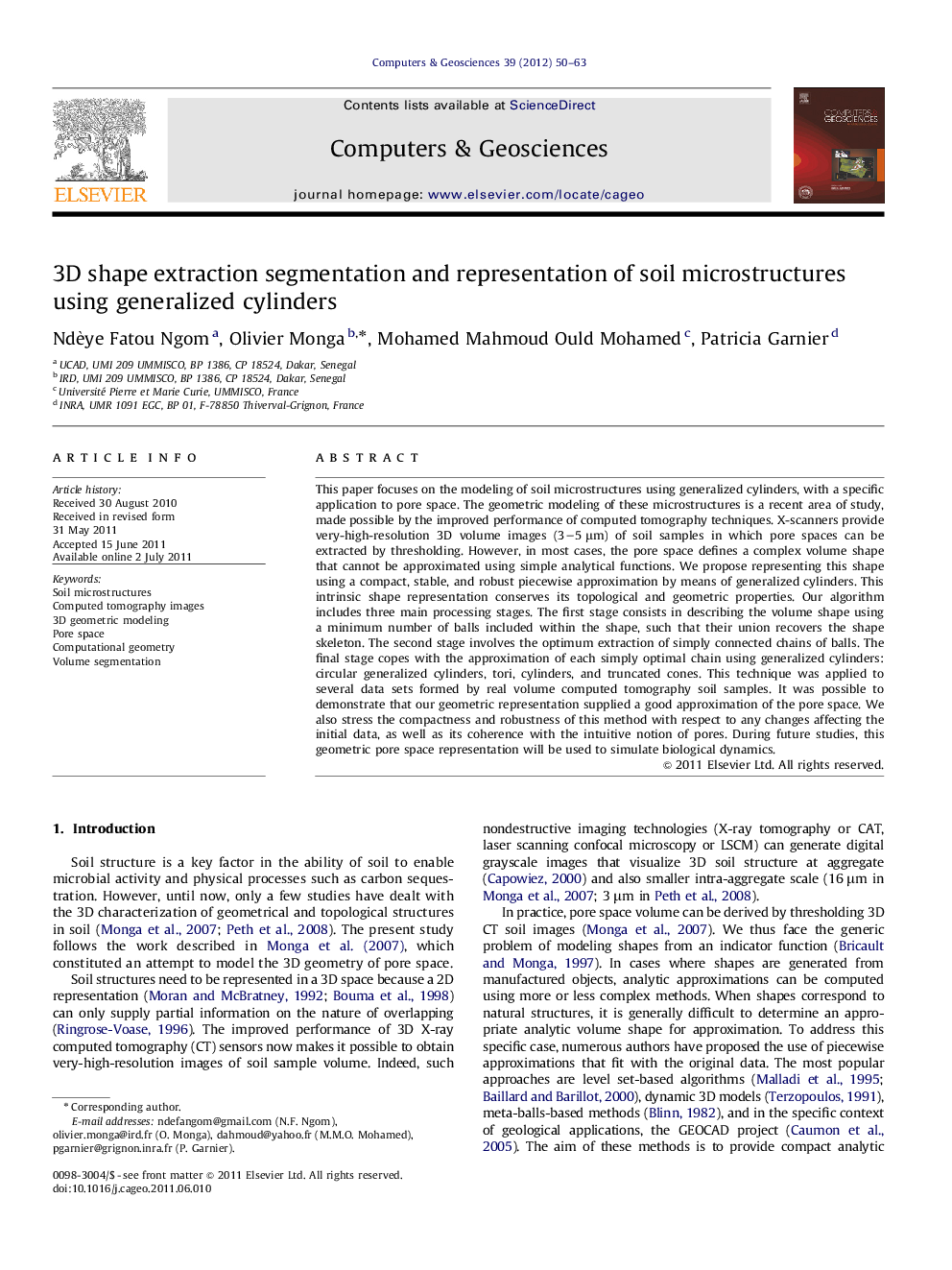| Article ID | Journal | Published Year | Pages | File Type |
|---|---|---|---|---|
| 507595 | Computers & Geosciences | 2012 | 14 Pages |
This paper focuses on the modeling of soil microstructures using generalized cylinders, with a specific application to pore space. The geometric modeling of these microstructures is a recent area of study, made possible by the improved performance of computed tomography techniques. X-scanners provide very-high-resolution 3D volume images (3–5μm) of soil samples in which pore spaces can be extracted by thresholding. However, in most cases, the pore space defines a complex volume shape that cannot be approximated using simple analytical functions. We propose representing this shape using a compact, stable, and robust piecewise approximation by means of generalized cylinders. This intrinsic shape representation conserves its topological and geometric properties. Our algorithm includes three main processing stages. The first stage consists in describing the volume shape using a minimum number of balls included within the shape, such that their union recovers the shape skeleton. The second stage involves the optimum extraction of simply connected chains of balls. The final stage copes with the approximation of each simply optimal chain using generalized cylinders: circular generalized cylinders, tori, cylinders, and truncated cones. This technique was applied to several data sets formed by real volume computed tomography soil samples. It was possible to demonstrate that our geometric representation supplied a good approximation of the pore space. We also stress the compactness and robustness of this method with respect to any changes affecting the initial data, as well as its coherence with the intuitive notion of pores. During future studies, this geometric pore space representation will be used to simulate biological dynamics.
► 3D computer vision techniques to compute a hierarchical geometrical representation of pore space microstructures. ► Initial data: high resolution 3D volume computed tomography images of soil samples. ► Composite representation of pore space using a set of volume primitives including generalized cylinders. ► Basic geometrical representation: minimum set of balls included within the shape and recovering shape skeleton. ► Implementation and experimental validation on several real data sets.
